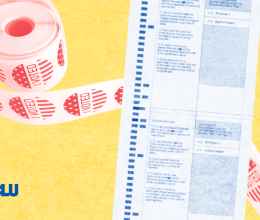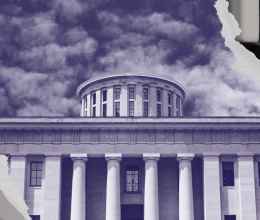The first 2016 American presidential debate is sure to spark angst and ire from the two major political parties. Both sides are eager to prove why the other is uninformed, unqualified and unfit for the presidency, vilifying large swaths of Americans. American apathy and voter hopelessness stands at a new high, with many hoping to wake and find it all a bad dream.
Unfortunately, this is not a dream and our country is still sharply divided. How will the candidates win undecided voters, outside of the non-stop commercial advertising and campaign stops? A debate. A simple and fair debate that will allow Hillary Clinton and Donald Trump to lay out their platforms, their vision for the country.
Are debates a voter education tool or a political ploy?
While the debates can be an important tool for voters’ education, it sadly does not present the full range of political ideas. Gary Johnson, the presidential nominee for the Libertarian Party, and Jill Stein, the candidate for the Green Party, have been excluded because polls indicate 15 percent of Americans would not vote for them today. Johnson currently attracts 8 percent of eligible voters while Stein has only 3 percent. Although these numbers are low, they could be improved if either or both candidates was allowed on the debate platform. They may very well be able to convince voters a two-party system is no longer relevant or in the best interest of our country.
To be a true representative democracy, all political parties need a foot on the platform, not a crumb from the table.
Presidential debates are held late in election cycles after candidates have secured their party’s nominations and selected their running mates. Meant to be nonpartisan, debates are voter education tools for the American public and opportunities for presidential nominees to outline their goals, foreign and domestic policies, and planned reforms. Although voter education is the key criteria of these debates, they have excluded third party candidates who have an equally important messages for voters.
Choosing who debates is not always fair
The Commission on Presidential Debates has sponsored general election presidential debates in every election since 1988. It tightly controls which candidates can participate and lesser-known candidates are automatically excluded from some of the most visible forums of the election, nullifying their chances of offering the American public an alternative to the two-party system. Candidates must meet a threshold of 15 percent of the electorate, as determined by polls conducted by organizations selected in advance by the CPD.
These organizations are selected because of the reputation of their polling methodology. Despite these vetting methods, national polls conducted months before the election can bear little resemblance to public opinion; elections are often close when landslides are predicted, or we see upsets when a favored candidate loses. It is difficult to predict who will show up to vote, who will stay home, or who will change their support at the last minute. Furthermore, polls often ask prospective voters who they would choose “if the election were held today.” Many voters cast their ballot for a Democrat or Republican candidate even when they prefer a third party, reasoning that the risk of the “other” party winning is too great.
We need more than a small sample of candidates to know show how diverse our country’s politics can be.
Polls, while useful for shaping strategies and public debate, can narrowly limit the country’s presidential candidates. American politics has become an either/or choice lacking the range of ideas a free republic has to offer, because we do not allow potential candidates to run as independents or on a minority party ticket and still stand a chance.
If we tune into the first debate on Monday, September 26, let us remember that these platforms represent only a fraction of the political values of our country.






